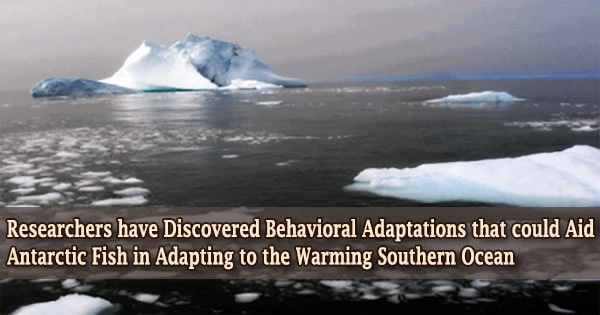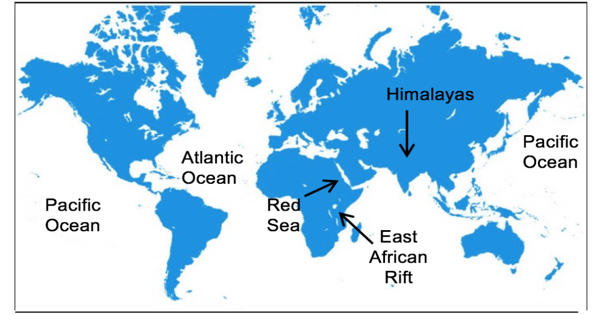Antarctica appears inhospitable at first glance. The continent is blanketed by a mile-thick ice sheet, which is known for howling gales and extremely severe temperatures. The glacier shorelines are occasionally flecked with elephant seals and seabirds.
The Southern Ocean, however, is teeming with biodiversity below the waves, with vivid swathes of sea ice algae and cyanobacteria, swarming krill and crustaceans, bristling kelp forests, enormous polar sea spiders and sponges, whale pods, and vast Antarctic fish fauna.
These fish serve an important role in the food web of the Southern Ocean’s 9,000 known marine species, yet their subzero sanctuary may be threatened. According to a 2021 climate analysis, some regions of the Antarctic continental shelf would be at least 1 degree Celsius warmer by 2050.
A new study published in PLOS ONE by researchers from Virginia Tech’s Fralin Biomedical Research Institute at VTC describes how two species of Antarctic fish, one with hemoglobin in its blood cells and the other without, respond to acute heat stress.
Both species responded to progressive warming with an elaborate array of behavioral maneuvers, including fanning and splaying their fins, breathing at the surface, startle-like behavior, and transient bouts of alternating movement and rest, according to the research team, which was led by Virginia Tech Vice President for Health Sciences and Technology Michael Friedlander.
“Remarkably, our team found that Antarctic fishes compensate for increasing metabolic demands by enhancing respiration through species-specific locomotor and respiratory responses, demonstrating resilience to environmental change and possibly to global warming,” said Friedlander, who is also the Fralin Biomedical Research Institute’s executive director, senior dean for research at the Virginia Tech Carilion School of Medicine, and a professor in the College of Science’s Department of Biological Sciences.
“Increased temperature of the central nervous system and target tissues such as skeletal and cardiac muscles, as well as reduced availability of dissolved oxygen in the water that passes through the gills during breathing, present a multi-faceted challenge to the fish. While these data demonstrate that Antarctic fish may alter their behavior in harsh circumstances, nothing is known about the consequences of environmental warming on their predation behaviors, food availability, and fecundity.”
“Behavioral manifestations that we’ve described show that these fishes have powerful physiological capacities to survive environmental changes,” said Iskander Ismailov, the paper’s first author and a research assistant professor in Friedlander’s laboratory during the study.
Increased temperature of the central nervous system and target tissues such as skeletal and cardiac muscles, as well as reduced availability of dissolved oxygen in the water that passes through the gills during breathing, present a multi-faceted challenge to the fish. While these data demonstrate that Antarctic fish may alter their behavior in harsh circumstances, nothing is known about the consequences of environmental warming on their predation behaviors, food availability, and fecundity.
Friedlander
Southern Ocean fish species have evolved well adapted to their icy ecology after millions of years of seclusion from the rest of the globe, courtesy of the Antarctic Circumpolar Current.
One of the two species researched by scientists is the blackfin icefish, Chaenocephalus aceratus, which has opalescent blood. These fish are among the rare vertebrates known to be deficient in hemoglobin, a protein found in red blood cells that efficiently transports oxygen from the lungs of land-dwelling vertebrates or the gills of aquatic vertebrates throughout the body’s tissues. Instead, blackfin icefish transport oxygen dissolved in blood plasma, which has around 10% of hemoglobin’s oxygen-carrying capability.
Because cold water makes oxygen more soluble, white-blooded icefish can flourish in the Southern Ocean. However, when water temperatures rise, these species’ metabolic demands increase, potentially making white-blooded fish more vulnerable to global warming.
Five white-blooded blackfin icefish and five red-blooded black rockcod, Notothenia coriiceps, were tested in a climate-controlled beachfront laboratory that cycled and gradually warmed salt water straight from the Southern Ocean to test this idea.
The fish were acclimated to the lab settings before being moved to the experimental tank, where the water temperature climbed at a pace of 3 degrees per hour from -1.8 to 13 degrees Celsius. The researchers were able to evaluate and quantify the fishes’ motility, respiration rate, tank moves, and fin movements thanks to extensive video recordings.
The white-blooded icefish demonstrated intense pectoral fin fanning as the water temperature rose, a behavior previously reported in icefish during egg guarding that the researchers believe may aid respiration.
According to Ismailov, the red-blooded fish used sophisticated maneuvers such as pectoral fin fanning and splaying, followed by startle-like C-turns, which may help with gill ventilation.
“The findings provide a new perspective on the effects of rising temperature on these highly cold-adapted species,” said George Somero, professor emeritus of marine biology at Stanford University and a leader in studying how marine life adapts to thermal stress, who was not involved in the research.
Early in 2014, preparations for the trip began. Before spending three months in 2015 at Palmer Station in Antarctica, the research team constructed, custom-built, and delivered laboratory equipment there. A flight to Punta Arenas, Chile, was followed by a boat traverse of the Drake Passage during the austral fall.
The first to arrive was Ismailov, who put up testing rigs. Jordan Scharping, a second-year Virginia Tech Carilion School of Medicine student undertaking research in Friedlander’s lab, joined him six weeks later. The two worked in 12-hour shifts in the lab, doing tests at near-freezing temperatures.
“Dr. Friedlander drew me to this project. I remember him presenting the Antarctic project proposal to us medical students and everyone just lighting up about it. It was an incredible opportunity and I appreciate him giving it to me,” said Scharping, who is now a physician at Northwestern Memorial Hospital.
During a series of four week-long fishing trips, researchers were responsible for gathering their own fish specimens. The researchers worked around the clock at sea, sometimes in difficult conditions, with the assistance of the research vessel crew.
“One stormy night while we were fishing, a two-story wave overtook the stern, drenching me from head to toe in ice-cold seawater the captain of the boat stopped the fishing after that,” Ismailov recalled.
“As a graduate of medical school, I never could have imagined that my career would lead me to Antarctica to study fish, but this research project has become one of the most extraordinary and memorable in my life.”
The field work was funded by a National Science Foundation Grant awarded to Elizabeth Crockett, professor emerita at Ohio University, and Kristin O’Brien, professor at the University of Alaska Fairbanks. Crockett and O’Brien both former graduate students of Bruce Sidell, who was trained by C. Ladd Prosser invited Friedlander to join the expedition along with collaborators from the University of British Columbia, the University of Leeds, and Valdosta State University.
However, the foundations of this latest study date back 45 years. Friedlander, then a graduate student at the University of Illinois at Urbana-Champaign, conducted research to advance experimental approaches to evaluate how temperature change affects molecular, cellular, and behavioral processes in an entire organism under the mentorship of Prosser, a pioneer in the field of comparative animal physiology and thermal biology.
In a 2015 review in the Journal of Experimental Biology, Somero praised their seminal study on the common goldfish, which was published in the Journal of Comparative Physiology in 1977.
“I find it gratifying that the pathbreaking studies of temperature effects on goldfish behavior carried out by Dr. Friedlander several decades ago have evolved into this fascinating new work on fishes of the Southern Ocean,” Somero said.
Despite the fact that stenothermal Antarctic fishes have a remarkable ability to survive acute thermal stress, Ismailov cautions that these sensitive species still require care.
“There’s a history of severe overexploitation in the Southern Ocean in the ’70s and ’80s due to unregulated commercial fishing. These activities had depleted the populations of some fish species so badly that the prospects of their recovery are still unclear,” Ismailov said.
Friedlander elaborates on this, pointing out that in a vulnerable ecosystem, all species perform critical functions.
“If left unregulated, anthropogenic activities could produce irreversible damage, impacting not just icefish, but many other species in the Antarctic food webs as well,” Friedlander said. “By doing these types of proof of principle experiments now to begin to understand the physiological repertoire available to species at risk, we can begin to make more informed predictions about what sort of perturbations within complex ecosystems that climate change may trigger, and what type of reserve and adaptive capacity individual species may deploy.”
Behavior is the final manifestation of changes in the function of molecules, cells, and entire systems in a live creature, and can thus serve as a potent readout of thermal challenge’s underlying consequences.
















